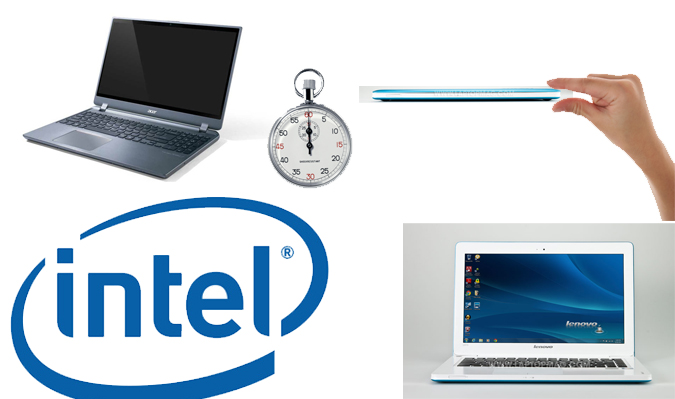
You've seen them in commercials. All over Best Buy. And a lot more are popping up alongside the MacBook Air, whether it's in coffee shops or at 30,000 feet. But what exactly is an Ultrabook? According to Intel, it introduced the term after conducting extensive user experience research to find out what users wanted in a portable computer. And those things are battery life, sleek design, ease of use, quick start-up, and top-notch performance.
Intel's goal for having its partners brand their notebooks as Ultrabooks is that it will make it easier for shoppers to set expectations for not only the thinness of the laptop but also the quality of the hardware and its performance. But you can't slap the name on any laptop. Here's what makes a notebook an Ultrabook.
1. Slim Design
An Ultrabook needs to measure 18mm (0.71 inches) or less in thickness for systems with displays less than 14 inches and 21mm (0.83 inches) or less displays larger than 14 inches. There is no weight limit for Ultrabooks but most weight between 3 and 4.5 pounds. There are also no restrictions on the size of the display, but the sweet spot seems to be between 13 and 14 inches. Larger 15-inch ‘Ultrabooks’ like the Samsung Series 9 15 inch are starting to show up more and more in the market.
2. Fast Resume from Sleep
No one wants to wait for a computer to come back to life after opening the lid. When you are ready to work, your PC should be ready, too. That's why all Ultrabooks need to be able to resume from sleep in less than 7 seconds. Some Ultrabooks achieve this responsiveness by combining a modest amount of flash memory (often called cache) with a traditional hard drive. Higher-end Ultrabooks tend to use solid-state drives. The ASUS Zenbook Prime, for example, wakes in 2 seconds or less.
3. Intel Core Processor Inside
Stay in the know with Laptop Mag
Get our in-depth reviews, helpful tips, great deals, and the biggest news stories delivered to your inbox.
The latest Ultrabooks are powered by Intel's third-generation Core processor (aka Ivy Bridge), which offers enhanced graphics performance without sacrificing battery life. Thanks to 22nm 3-D tri-gate transistors, Intel says that Ultrabooks with the latest CPU are also more responsive and secure. However, some Ultrabooks are still available with second-generation Core processors, which tend to be cheaper.
4. Built-in Security
Intel has built Anti-theft and Intel Identity Protection Technology into the Intel silicon and come pre-installed on Ultrabooks. These two security features require a subscription service but if you travel a lot with your computer, these features can remotely lock down your computer to protect your personal information if the device is lost or stolen.
5. USB 3.0 and/or Thunderbolt Ports
An Ultrabook needs to be equipped with a USB 3.0 and/or a Thunderbolt port. Multimedia mavens are using external hard drives to supplement smaller capacity of the SSDs, and the USB 3.0 ports ensure a fast transfer rate. Thunderbolt-powered peripherals are still coming online, but Intel says the blazing transfer rate of this technology is speedy enough to transfer a full-length HD movie in less than 30 seconds. The Acer Aspire S5 is the first Ultrabook with a Thunderbolt port.
6. Minimum 5 hours of Battery Life
Portability means not being tethered to an outlet. With this requirement, Intel is challenging Ultrabook makers to create machines that can last through most of the day. Some Ultrabooks, such as the Dell XPS 14, last as long as 8 hours on a charge. However, the vast majority of Ultrabooks we've tested last between 5 and 6.5 hours.
7. Optional Features
Some Ultrabooks come equipped with Intel's Smart Connect technology, such as the Dell XPS line. Lenovo builds on the technology with the Smart Update feature inside its IdeaPad U310. This feature enables the notebook to keep email and social networking updated in the background while the system sleeps. That way when you get back to work all of your data will be refreshed.
What's Next for Ultrabooks
Intel plans to expand the Ultrabook category, especially in terms of more affordable options, while maintaining the above requirements. Later this year Windows 8 Ultrabooks with touch screens will add to the growing list of options.
